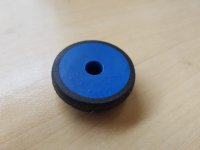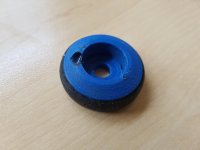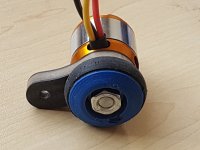spinningmagnets
100 TW
but I still think it will suffer in the wet.
I was able to improve my friction drive step-by-step until I got up to about 1000W at 36V. On your system, the rim will be spinning at a high enough rate that most of the water will be flung off. I suspect that the fact you have two rollers grabbing the rim (in a pinching motion) will help with its traction. Perhaps even up to 1500W?
Even if the power that you use maxes out at 1000W before slippage becomes an issue, the question becomes....would you be happy with 1000W if it was very lightweight? If you are researching and making a prototype to see what customers would buy, I wish you luck.
The Yescom hubmotor is not light, but minus the battery/charger/and bike...They are only a hair over $200. I couldn't turn a profit using one motor. So...it will slip some in the wet...so what? I don't ride in the rain, and...if I am forced to go through a puddle, I may only have to pedal for a dozen yards or so and it's back to 1000W of motor driving me...





